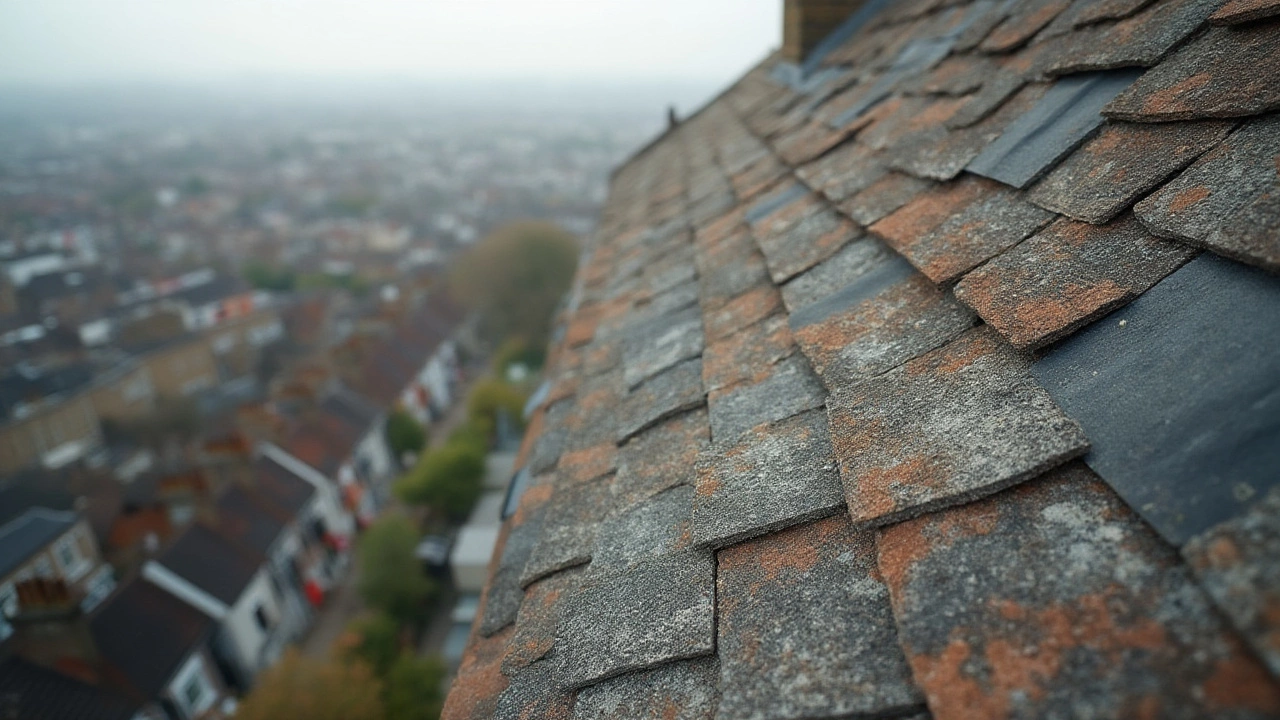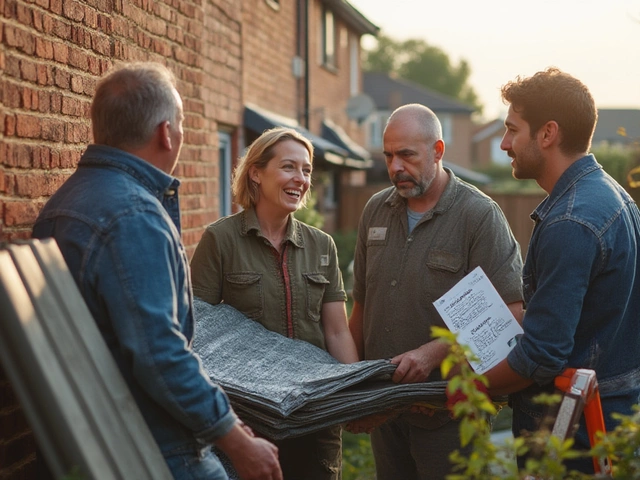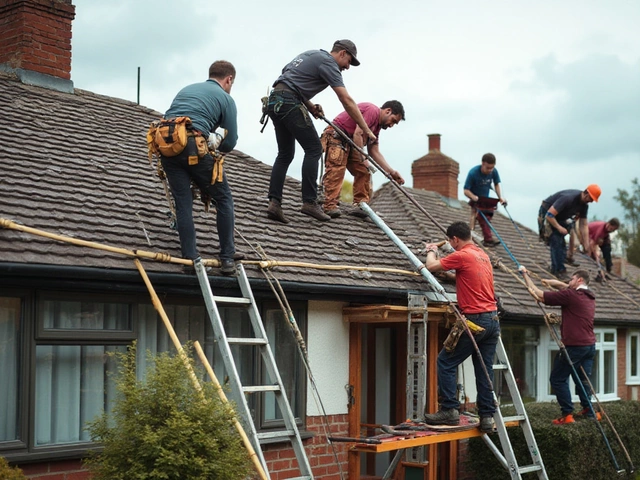Did you know the top surface on your house can gobble up 40% of your construction budget? Yep—it’s not your kitchen or fancy bathroom tiles. Roofing might look straightforward, but between materials, labor, and those surprise hidden fees, the price tag often catches people off guard. The big question is, how do you cover your house without draining your wallet?
Decoding What Makes a Roof Cheap—And What That Actually Means
The phrase “cheap roofing” gets thrown around like cheap Halloween candy. But what does it REALLY mean? Price-per-square-foot isn’t the only thing at play here. The type of material, lifespan, weather resistance, local labor rates, and even how steep your roof is all mess with the bottom line. So before you grab your wallet or hammer, let’s break down what makes roofing truly affordable—and what pitfalls to avoid if you don’t want a budget roof that springs a leak at the first sign of rain.
First up, let’s tackle material choices. Standard three-tab asphalt shingles are by far the king of cost savings in North America. According to the National Association of Home Builders, roughly 75% of homes rock these shingles. They’re cheap to produce, quick to nail down, and run roughly $100-$120 per roofing square (that’s 10x10 feet). Factor in labor, and you’re still looking at one of the best bargains in residential roofing.
But here’s the snag—cheap up-front doesn’t always mean cheap long-term. Three-tab shingles can last 15 to 20 years if installed right. But heavy rain, wild winds, or even a flock of determined squirrels can cut that down. Meanwhile, options like metal panels might cost more up front but go the distance for 40 to 70 years.
Labor is your other wild card. A straightforward, gently sloped roof is easy for installers, which keeps costs tame. But pitch up the angle or zigzag the design? Watch your labor costs double fast. Want to go even cheaper? Some brave souls go the DIY route, but this can be a gnarly path if you’re not careful. Mistakes can cost you your savings—and your health insurance deductible if you tumble off a ladder.
Then there’s the underlayment, flashing, fasteners, delivery fees, and old roof disposal. These extras can quietly bloat your bill if you’re not watching out. Always get an all-in quote, not just a materials price, so there are no unwelcome surprises.
The type of house and local climate play their part too. In high-wind or storm-prone areas, codes can mandate pricier flashing or thicker shingles. And some low-cost options might not be legal where you live. Checking with the building department saves headaches down the line.
So, cheap roofing means getting tough, weatherproof coverage for less—but not ultra-lowballing so hard you end up with leaks or major repairs in a few short years. That sweet spot between price and quality is what you’re after.
From Asphalt Shingles to Metal Sheets: The Cheapest Roofing Materials Ranked
If you’re all about stretching every dollar, you need to know what materials give you the most bang for your buck. Forget fancy slate or hand-split shakes—for cost savings, the real contenders are asphalt shingles, roll roofing, corrugated metal, and some architect-approved synthetic sheets. Here’s how they stack up.
1. Three-tab asphalt shingles are the classic for a reason. They offer the lowest up-front cost for a solid, decent-looking finish. They’re also famously easy to install, and any roofer in town will know how. These run between $0.90 to $1.40 per square foot, with labor bumping the total up to about $3.50-$5.00 per square foot installed. The lifespan is so-so, topping out at around 20 years.
2. Roll roofing is your barebones option, mostly for sheds, garages, and very low-sloped roofs. This stuff unfurls like a carpet, nails down super fast, and costs about $0.60 per square foot. Since it’s thin and simple, roll roofing only lasts 5–8 years before it needs replacing. It’s a hack for outbuildings or emergencies, but nobody brags about it on Instagram.
3. Corrugated metal roofing comes next. Thanks to mass production and lighter gauge steel, metal sheets can be pretty wallet-friendly. A standard 29-gauge panel can start at $1.00 per square foot (materials only), with finished jobs averaging out to $6.00–$8.50 per square foot when you factor in installation. Metal lasts longer—think 40+ years—and shrugs off hail and blazing sun better than asphalt. But, installation needs precision—one missed fastener and you’ve got raindrops on your pillow.
4. Architectural shingles and some newer synthetic options creep into the game too. They cost more—typically $1.50-$2.00 for just materials—but last longer (up to 30 years) and look sharper from the street. In some neighborhoods, they also boost resale value.
Have a peek at this quick-hit table for a side-by-side:
| Material | Avg. Cost (sq/ft, installed) | Average Lifespan | DIY-Friendly? |
|---|---|---|---|
| Three-Tab Asphalt Shingle | $3.50–$5.00 | 15–20 yrs | Yes |
| Roll Roofing | $1.75–$3.50 | 5–8 yrs | Yes (small/flat roofs) |
| Corrugated Metal Panel | $6.00–$8.50 | 40–70 yrs | No (needs specialty skills) |
| Architectural Shingle | $5.00–$7.00 | 25–30 yrs | Yes (more complex) |
If you need every penny to count, start with three-tab shingles or roll roofing. For anyone willing to invest a bit more at the start to save on repairs or replacements, basic metal or architectural shingles offer a sweet balance between cost and durability.

Insider Tricks: Slashing Roofing Costs Without Sacrificing Quality
Alright, so you know the materials and the price range. But how do real pros keep costs at rock-bottom while getting a roof that survives the wildest Midwest weather? Turns out, there are quite a few trade secrets—and nope, it’s not just about buying materials at wholesale clubs.
One sneaky-but-smart shortcut: paying attention to off-season installs. Most folks get their roofs redone in spring or early fall, when the weather is mild. But many contractors are hunting for work in late summer blazes or chilly winter days. Book your project from November to March, and some roofers will shave 10–20% off their bids just to keep crews busy. Just don’t try this when there’s snow or ice on your roof, or it’ll get messy fast.
Another tip? If you have some basic skills (and a good friend or two who are NOT afraid of heights), you can do the tear-off yourself, then let the pros handle just the install. Hauling off the old shingles costs on average $40–$80 per ton. Grab some sturdy gloves and a roofing shovel, and you could knock that labor charge off your bill.
If your local rules allow, you can sometimes layer new shingles over old ones—cutting down on disposal and labor. Don’t go beyond one extra layer though, or you risk a “Franken-roof” disaster that sinks under its own weight. And check for soft spots or leaks ahead of time, since new shingles over rotten plywood is like taping a Band-Aid over a busted dam.
It pays to rally your neighbors too. If several houses on your block need a new roof, team up and get bulk pricing from your favorite crew. Contractors save money with less back-and-forth to the hardware store and they often share the savings if you negotiate up front.
Shopping local can slice delivery costs, especially for heavy stuff like shingles or drip edge. Big box stores are convenient, but local supply houses sometimes offer deals and let you return leftovers. Always ask about discounts for leftovers, overruns, or discontinued colors—you might find a quirky hue for a fraction of the “designer” price.
Finally, don’t skip the quality check. Cheap materials + bad installation is a recipe for leaks, mold, and ruined drywall down the line. Make sure the installer nails down a proper underlayment, seals every flashing, and tosses in ventilation (a must for shingle lifespan). Ask to see sites of their recent work—and a few references who survived at least two rainy seasons.
DIY vs. Hiring Out: Which Choice Balances Budget and Headaches?
The ultimate question: should you brave the roof yourself or call in the crew? A huge part of your budget rides on this choice. Doing the job yourself can drop costs by nearly half, since labor makes up 40–60% of a typical roof price. But it’s not for everyone—and not every house can (or should) be a DIY project.
If you’ve got a simple one-story home and you’re handy with power tools, asphalt shingles and roll roofing are about as straightforward as DIY jobs get. You’ll need safety harnesses, a solid ladder, a nail gun or roofing hammer, and a huge amount of patience. Figure on two to four days if you have some strong helpers and take your time. YouTube has some incredible how-to videos, but nothing beats a walk on your roof on a sunny dry day to see if you’re actually up for it.
The biggest payoff here is cost savings, but there’s a dark side. One missed step, and a quick fall can mean busted bones (or worse). Insurance won’t love you if you cut corners on permits or wind up with leaks caused by sloppy nailing. If you install it wrong, you’re on the hook for all the fix-ups, and warranty claims go out the window. And for roofs with lots of angles, valleys, or steep slopes—honestly, it’s pro territory.
Bringing in a roofing contractor smooths out the stress. Licensed roofers have the right tools, the crew, and the know-how to get it done fast—sometimes in just a day. If you hit a hidden problem (like bad decking or rotted underlay), they’ll know how to handle it fast, without you spending Saturday night combing forums for answers. Most pros offer a warranty that covers labor and material defects for years—freeing you from costly surprises.
Not sure where to put your money? Try a hybrid: do the tear-off (if it’s safe), let the roofer do the install, then handle things like gutters and trim yourself. Just be honest about your own comfort level and tools on hand. Some things aren’t worth learning the hard way, especially 20 feet off the ground.
Whichever path you pick—DIY or hired hands—you can stack up big savings by focusing on simple, reliable materials, watching for seasonal deals, and avoiding hidden fees in your final quote. Keep quality high, and your new cheap roof could keep your home dry and cozy for decades.






